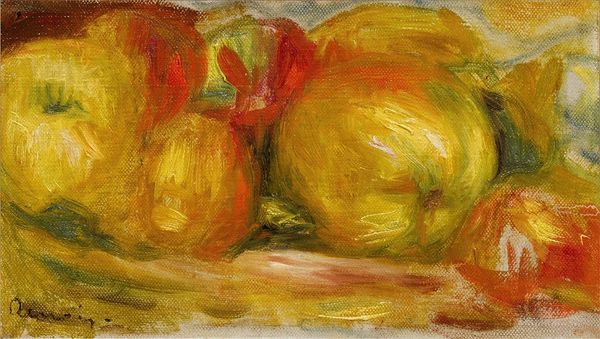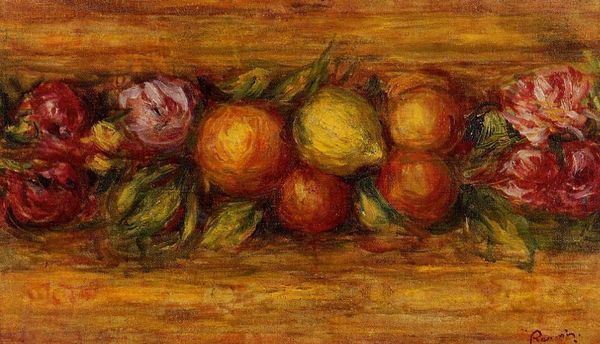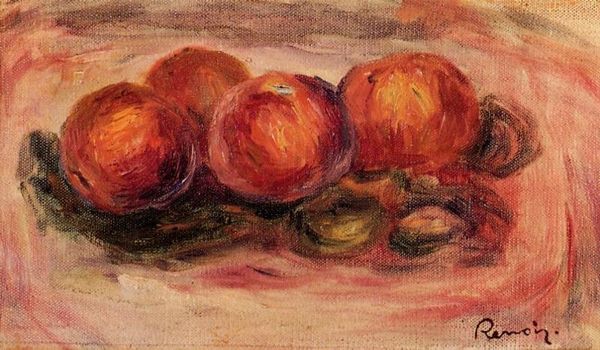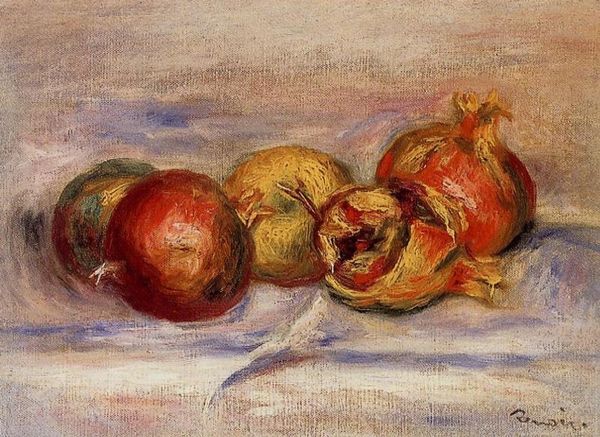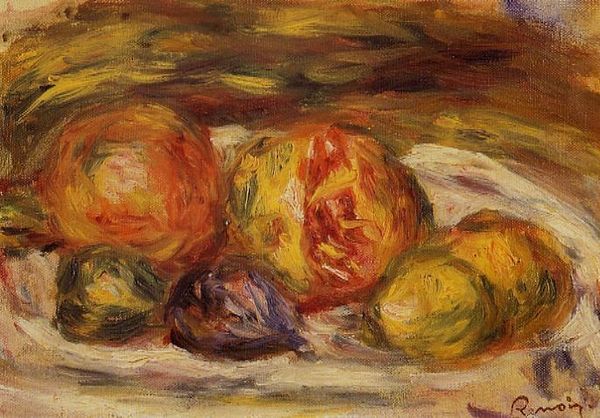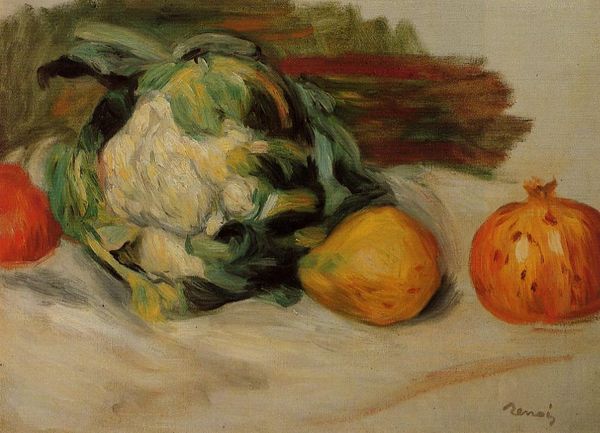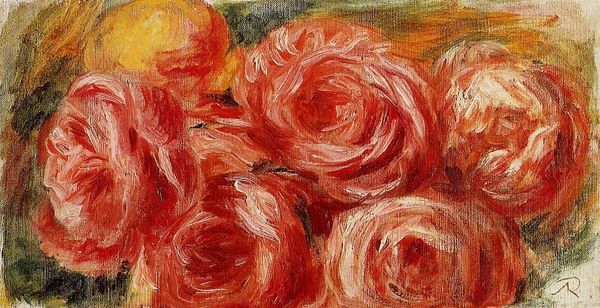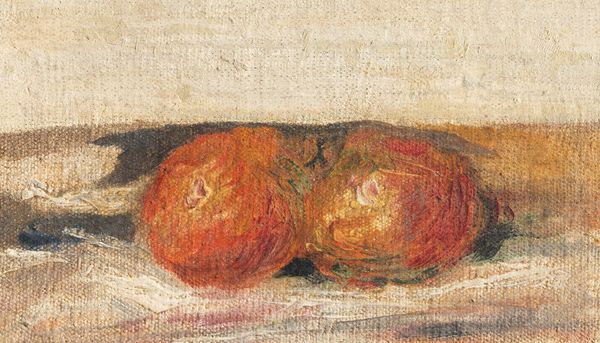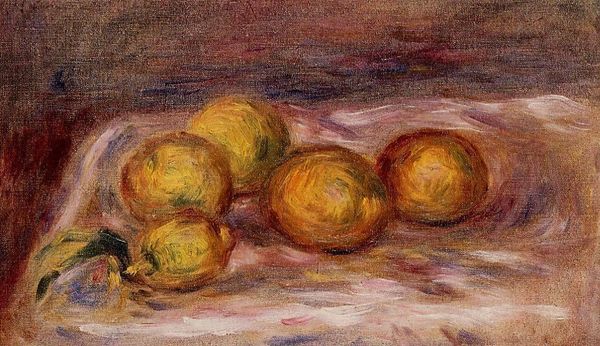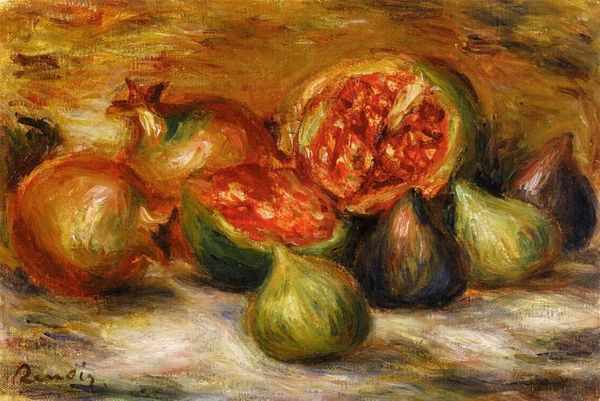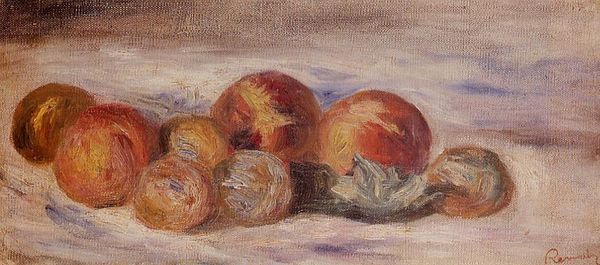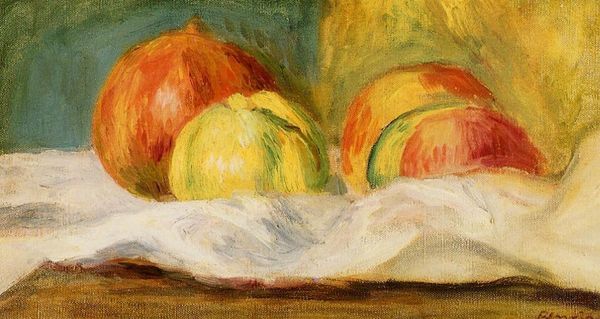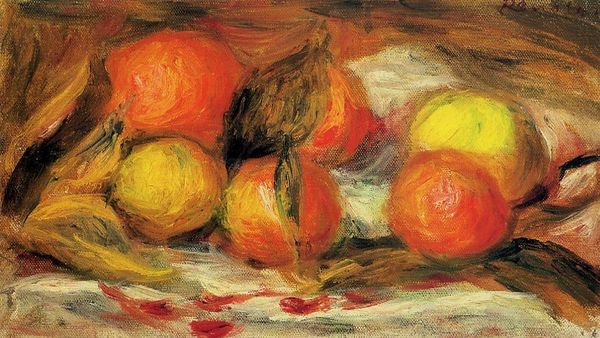
#
abstract expressionism
#
abstract painting
#
possibly oil pastel
#
oil painting
#
fluid art
#
acrylic on canvas
#
underpainting
#
paint stroke
#
painting painterly
#
expressionist
Copyright: Public domain
Editor: So here we have Renoir's "Pears," painted in 1915. It's an oil painting and the brushwork is just so, well, luscious! There is something almost visceral about the application of the paint. What do you see in this piece? Curator: Visceral is a great word for it! I see a negotiation between the established and the radical. Renoir is engaging with the Impressionist tradition, but this isn’t just a still life; it's a declaration. Can we consider the gaze here, and who historically was granted the privilege of depicting and consuming images of pleasure, of simple beauty? Editor: So you're saying it's not just about painting pears, but about who gets to paint and who gets to look? Curator: Precisely! It makes me question who was, and perhaps still is, excluded from this aesthetic conversation, and whose experiences are considered 'unworthy' of artistic representation. This image embodies late-stage capitalism and who reaps the benefits. Look at that thick impasto! What do we think that embodies? Editor: Well, the abundance is very clear. This painting also reminds me how we often overlook the labor involved in producing even the simplest still life. Where did Renoir get his paints? Who grew these pears? Curator: Exactly. Thinking about labor is important. It shifts our perspective from passive observers to active interrogators of the systems that produce art. Also, who paid for this art and where did it reside after? Editor: That’s such an important point. I’ll never look at a Renoir the same way. Curator: Me neither. Thinking about how these images circulate within our current political climate can bring about so much change in our interpretation.
Comments
No comments
Be the first to comment and join the conversation on the ultimate creative platform.
